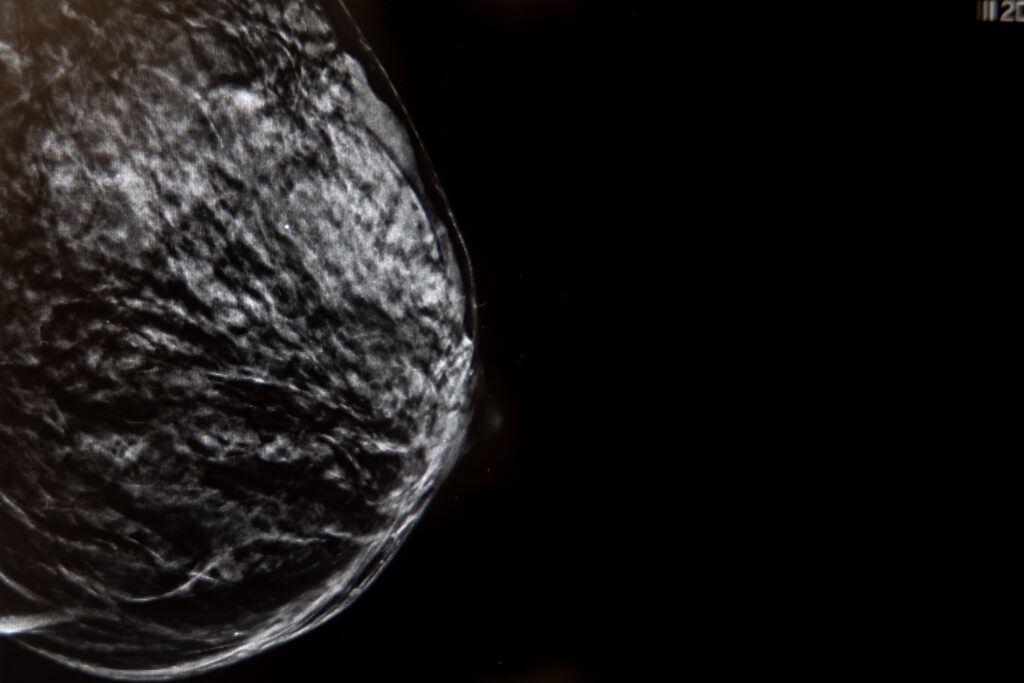Tomosynthesis Mammography
What is Tomosynthesis Mammography?
Tomosynthesis mammography, also known as 3D mammography, is an advanced breast imaging technique that uses low-dose X-rays to create a three-dimensional image of the breast. Unlike traditional mammography, which provides a two-dimensional image, tomosynthesis captures multiple images from different angles, allowing for a more detailed visualization of breast tissue.
What is this diagnostic test used for?
The main uses of tomosynthesis mammography are:
- Breast cancer detection: It allows for the identification of small tumors that might go unnoticed in a conventional mammogram, especially in breasts with high tissue density.
- Greater precision in dense breasts: It reduces tissue overlap, improving the visualization of breast structures in women with dense breasts.
- Reduction of false positives: It reduces the need for additional tests by decreasing the number of dubious images.
- Detailed evaluation of lesions: It allows for a more precise evaluation of detected lesions, helping to determine if they are benign or malignant.
- Early detection: It is a very useful tool in the early diagnosis of breast cancer.
Benefits of high technology in tomosynthesis mammography
Tomosynthesis mammography offers a series of key benefits thanks to the technology it uses:
- 3D images: Provides a three-dimensional visualization of the breast, allowing for better lesion detection.
- Low radiation dose: Uses a radiation dose comparable to that of conventional digital mammography.
- Advanced digital processing: Uses advanced software to reconstruct images and improve the visualization of breast tissue.
- Detection of hidden lesions: Helps detect lesions that might be hidden in a traditional mammogram.

How is the procedure?
Tomosynthesis mammography is a procedure similar to a conventional mammogram, but with some differences:
-
Preparation:
You will be asked to remove your upper clothing. It is important to know that the procedure will not be performed if you are pregnant.
-
During the test:
First, you must stand in front of the mammography machine. Then, your breast is positioned on a platform and compressed with a transparent plastic paddle. In tomosynthesis, the X-ray tube moves in an arc over the breast, capturing multiple images from different angles. The process takes several seconds for each breast.
-
After the test:
The procedure lasts 10 to 15 minutes in total. If you have implants, more images of each breast will probably be obtained, making the procedure slightly longer. Then, the images are analyzed by a specialized radiologist.
Recommendations for the test
Remember that it is important to follow these recommendations to ensure the quality of the study and your comfort:
- Do not use deodorants, creams, lotions, or talcum powder in your armpits and breasts.
- Bring previous studies (if you have them), so the radiologist can compare them. If you have it done at HM, it is not necessary to provide them, as they are already registered.
- Breasts are less sensitive one week after menstruation, but the procedure is very well tolerated by most patients.
- Notify if you are pregnant or breastfeeding, as another test will probably be recommended.
- Results will be available soon (less than a week or sometimes even on the same day). Ask when the procedure is finished.
Are there any risks?
Tomosynthesis mammography is generally safe, but like any X-ray study, it has some minimal risks to consider:
- Radiation exposure: It uses a low dose, similar to conventional mammography. The benefit of early detection far outweighs the radiation risk.
- Discomfort during the procedure: Compression can be uncomfortable, but it only lasts a few seconds. If you have sensitive breasts, try to schedule the study after your menstrual period.
- Possible false positives: It can detect dubious images that may lead to additional tests or unnecessary biopsies. However, the risk is lower than with conventional mammography.
- Although it improves cancer detection, it does not detect all types of cancer. Often, it is recommended to complete the study with breast ultrasound and/or breast MRI.
It is a safe, accurate, and recommended method for the early detection of breast cancer, and the benefits far outweigh the risks.
For your test to proceed smoothly, we ask that you arrive in advance of your scheduled time. This will allow us to complete the necessary administrative and clinical preparation.
Before the test, we will provide you with the Informed Consent form, a document with important information that you must read and sign.
If your appointment is for a Magnetic Resonance Imaging (MRI), it is crucial that you inform us about the presence of pacemakers, metallic objects, prostheses (including dental ones), tattoos, or medication infusion devices, such as insulin pumps.